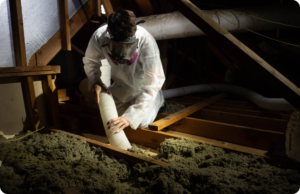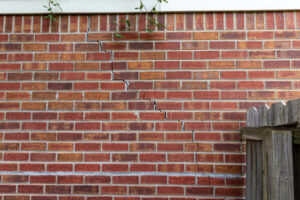While it may seem like a small detail, portable restrooms make a big difference at construction sites. By ensuring workers have access to portable toilets, they can focus on the job and complete it more quickly.
Plus, portable restrooms are easily relocated when the work site requires it, minimizing the amount of time workers spend traveling to and from toilets. Here are just a few benefits of Rent A Restroom Trailer for your next construction project or event:

Increased Productivity
Whether on a sprawling commercial construction project or a small residential renovation, having reliable restroom facilities isn’t just a convenience; it’s also crucial to maintaining productivity and efficiency. Providing access to clean and conveniently located portable toilets eliminates the need for workers to leave the job site in search of off-site facilities, reducing downtime and enabling them to stay on task and focus their efforts.
Regular cleaning and servicing schedules ensure that portable toilets are always available for use. This is particularly important during periods of peak worker activity, or when large crowds are expected to attend events like concerts and sporting competitions. It’s also a good idea to consider options that are accessible to individuals with disabilities, such as wheelchair-accessible units.
In addition to increasing productivity, incorporating porta potty rentals into your construction project planning helps to maintain compliance with local health and safety laws. It also shows that your company is dedicated to meeting the sanitation needs of your workforce, which improves morale and fosters a positive work environment.
For residential renovation projects, portable toilet rentals help to preserve client privacy and build trust. Clients don’t want to have total strangers traversing through their homes in search of a bathroom. Having portable bathrooms on-site is much more convenient and provides your clients with the privacy they deserve. They can even enjoy the convenience of having the portable bathrooms relocated as necessary during the renovation process to optimize accessibility and functionality.
Better Hygiene
Whether overseeing a construction project or planning a large event, having hygienic restroom facilities nearby is essential for the comfort and productivity of your workers or guests. Portable toilets are the ideal solution to address this need, as they can be quickly and easily transported to a specific location.
With a variety of options available, it’s easy to find the perfect portable toilet for your site or event. These units range from basic models that cater to the most essential needs, to luxury units that offer more amenities and comfort. In addition, these toilets can be equipped with features such as hand sanitizer dispensers and ventilation, which improve hygiene and overall user experience.
Some modern portable toilet rental options even come with eco-friendly features, allowing you to reduce your environmental footprint and comply with local regulations. This can also help you build a stronger reputation with current and potential customers who appreciate your commitment to sustainable practices.
It’s important to plan ahead when renting portable toilets for your construction site or event. The number of units needed varies depending on the duration and number of people attending, as well as the accessibility requirements for guests with disabilities. Ensure that you choose a portable restroom provider that can accommodate these needs, and ask them about special options such as ADA-compliant toilets. This will prevent you from having to pay extra for services or face a fine from the local authority.
Reduced Waste
The old stereotype of porta potties as dirty, smelly, and unhygienic may be true in some cases, but today’s portable toilets, when rented from a reputable provider, are clean, efficient, and able to maintain high hygiene standards. Their built-in waste management systems also ensure that all of the waste is properly contained, removed, and disposed of.
If your workers have to leave a construction site or event to find a public bathroom, they lose 20-30 minutes per restroom break, and that adds up quickly. Having on-site portable toilets eliminates the need for them to leave the work area, which can help keep projects on schedule and boost productivity.
While it’s important to make sure that your restrooms are cleaned regularly, you can also choose units that use eco-friendly materials and water-saving technologies. This reduces energy consumption and environmental impact, while helping you to stand out as a company that cares about sustainability.
Whether you’re planning an event, managing a construction project, or renovating your home, having the right number of portable toilets is crucial to keeping people comfortable and happy. Contact a reputable rental service today to learn more about the various types of portable toilets available and how they can serve your needs. You can even request quotes for bulk rentals or longer-term contracts, which often result in savings.
Increased Safety
The ability to use portable toilets at work increases overall workplace safety. Workers who need to leave the job site for restroom facilities will not be distracted by long walks to off-site facilities, which will help them remain focused on their work and allow them to return quickly. This helps maintain workflow and keep projects on schedule.
It also reduces the risk of health issues that can lead to increased absenteeism and decreased productivity. Regulatory agencies, like OSHA, require construction companies to provide accessible toilet facilities for their employees, and portable restroom rentals can be an effective solution that provides both convenience and compliance.
Additionally, the ease of access to portable toilets at a construction site allows workers to take more efficient breaks, which can also help with workflow and productivity. This is because they don’t have to spend a long time going on bathroom breaks, which can cause them to miss valuable project milestones.
Portable toilets can be positioned strategically around a construction site, ensuring that workers don’t have to travel too far from their areas of work. In addition, some portable restrooms, such as the hi-rise units available are equipped with hand sanitizers to ensure that workers stay safe and healthy. These features can be particularly important for a construction company working in public areas or near residential neighborhoods. They can contribute to a positive public perception and show that the construction company takes care of its employees and community.
Less Downtime
Construction projects require meticulous planning and precise execution to remain productive, on schedule, and within budget. While equipment and manpower are often the focus, portable toilets play a critical role in keeping job sites safe, functional, and compliant with regulations.
Workers who have easy access to sanitary restroom facilities can attend to their needs without interruption, reducing the need for break-time and avoiding costly delays in workflow. Incorporating portable restrooms into the initial site plan ensures efficient workflow and cost-effective solutions, while improving worker morale and productivity.
In addition to being a vital necessity for all types of construction projects, portable toilets provide an important benefit when working on residential renovations. Clients are often uncomfortable with strangers entering their private home to use the bathroom, and asking them to go to a nearby gas station or public restroom may damage trust and create an unpleasant experience for the homeowner. By providing convenient restroom facilities at the construction site, contractors can keep clients comfortable and happy while minimizing downtime and maximizing productivity.
Porta-potty rentals are also ideal for large outdoor events, including concerts, festivals, weddings, and corporate functions. They’re easy to move around and don’t require a lot of space, making them an effective solution for any type of event where sanitation is a concern. For a more luxurious option, consider renting restroom trailers that are climate controlled and equipped with sinks with running water, mirrors, and other conveniences.
Increased Reputation
Many construction workers lose a significant amount of time each day due to bathroom breaks. Having portable toilets on site allows them to use the facilities when they need to without slowing down the project. This increases productivity and creates a more comfortable working environment for employees.
In addition to providing quality restroom units, rental companies should focus on offering excellent customer service and support. Building relationships with construction companies, wedding venues, and event planners can help generate repeat business and increase sales. Attending industry trade shows and joining professional associations can also help build these connections.
Portable restroom rentals are an essential component of any successful event, no matter the size or location. Without these units, people would have to seek out nearby restrooms, which is inconvenient and unpleasant for both the guests and the organizers. By providing top-notch portable restroom units and ensuring hygiene supplies are fully stocked, reputable rental companies can ensure their clients have an exceptional experience at each event they manage.
Expanding a portable toilet rental business requires careful consideration of costs and market demand. It’s important to stay up-to-date on common categories of portable toilets and advancements in this field, so you can provide your customers with the best options available. It’s also a good idea to offer multiple service tiers, including budget rentals, handicap-accessible units, and luxury units for upscale events.








